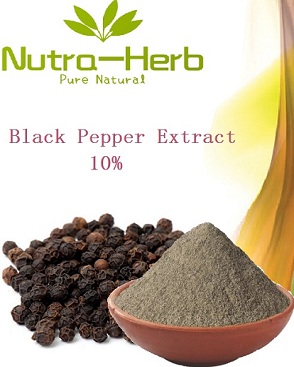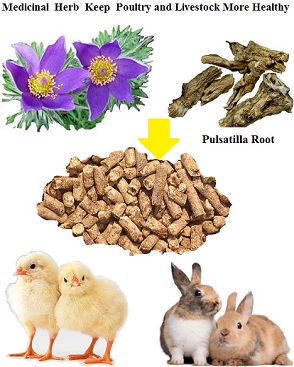- Plant-Based Protein
- Natural Plant Flavours
- Food and Dietary Supplement Ingredients
- Fruit Juice Powder
- Animal Nutrition Ingredients
- Water Soluble Ingredients
- Cosmetic Ingredients
- Unveiling the Therapeutic Potential of Rabdosia Rubescens: A Comprehensive Review
- What are the medicinal properties of Rabdosia Rubescens?
- Nutritional value of Orange Juice Powder compared to fresh orange juice.
- Processing Conditions and Nutritional Value of Orange Juice Powder
- Exploring the Versatility of Herbal Extracts in Food Flavors
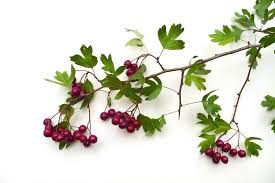
What are the health benefits of hawthorn leaf?
Welcome to our blog! Today, we are diving into the world of hawthorn leaf and uncovering its incredible health benefits. Whether you're a fan of herbal remedies or simply curious about natural alternatives, hawthorn leaf is definitely worth exploring.
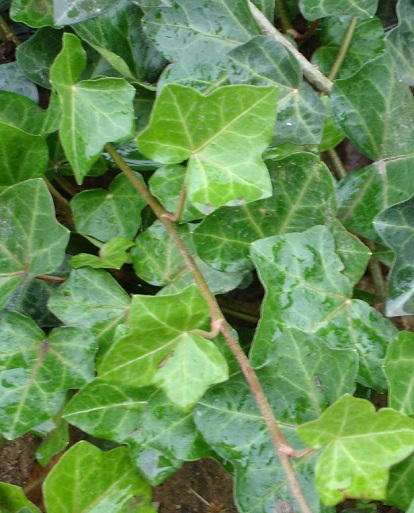

Common ivy extract/Hedera helix Extract and benefits,side effect, uses
Common ivy extract/Hedera helix Extract is a good natural antimicrobials which can be used to preserve food from spoilage and pathogenic microorganisms.It can also be used as feed addtives.Ivy has good Inhibitory effect on bacteria and fungal growth. It also has antiviral effect.
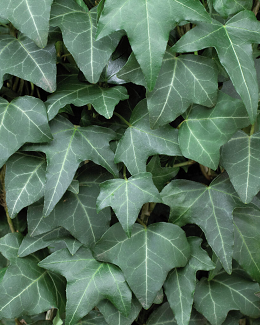
What you may get from us: If you're developing a product that contains plant active ingredients from Hedera helix .I think you can find the information or products you need here.
Simple production process in our factory:After the plant is collected, raw material will be processed by solvent extraction, separation and purification, filtration, concentration, drying and other steps to form the final products. We may also design a prouction process based on your special requirements.
Through the physical and chemical processes, those compunds you don't want was removed, and the compunds preferred was accumulated. Which make the products achieve the best effects.
How to use Common ivy extract/Hedera helix Extract powder:
What you need is just use our products to formulate your products. It can be mixed with your other ingredients directly to make premix products. It can also be directly used for filling capsules or making tablets. And if your dosage form is tincture or solution, It can also be suitable. Easy to say, our products are ready for Formula products.
|
Common ivy extract/Hedera helix Extract |
||
|
Scientifica name |
Hedera helix L. |
|
|
Appearance |
Fine powder |
|
|
Color |
Brown |
|
|
Purity of active compunds |
5%-10%Hederacoside C |
By HPLC |
|
Partical size |
Normally pass through 80mesh |
|
|
Other parameter |
We also control other parameters like: moisture, Microbiological limits, Heavy metals. |
|
|
Pack size |
25 kgper paper drum |
|
|
For pricing or more information,please call 86 29 88444632 or send an email to Sales@nutraherbsource.com
|
||
Overview Information
Common names: Common ivy, dried ivy leaves, gum ivy, Hedera helix L., Hedera helix leaf extract, Hedera helix ssp. Canariensis Willd., true ivy, variegated ivy, woodbind.
Description: It is evergreen woody perennial plant. The stem is long, either creeping or climbing and may attain a length of up to 30 m. When old, stems may reach a diameter of over 10 cm and even produce a short trunk. The stem is attached to the substrate by numerous small roots produced at each leaf node, which bear vascular-arbuscular mycorrhiza. The deep green, glossy, leathery leaves are evergreen, heterophyllous, and mostly palmately lobed on sterile stems whereas those on flowering stems are ovate and larger. Leaves of the plant are usually less than 8 cm across, they are long-lived and have a strong smell when crushed. The perfect, sometimes protandrous, yellow-green flowers, 5-7 mm across, are clustered on terminal inflorescences born on stems climbing to canopy height. The fruit, a drupe 6-9 mm in diameter, is green turning dark purplish/black when mature and contains 2-5 seeds.
Chemical constituents:
The preliminary phytochemical analysis of Hedera helix revealed that the plant contained unsaturated sterols, tannins, phenolic compounds, terpenoids, glycosides, alkaloids, flavonoids, carbohydrates, reducing sugars and saponins.
Triterpene saponins:hederagenin,hederasaponin C (=hederacoside C) and hederasaponins B, D, E, F, G, H and I, hederasaponin A,helixoside A, helixoside B, 3-O-β-glucosyl hederagenin; polyacetylenes:falcarinon,falcarinol; fatty acids: petroselinic,oleic, cisvaccenic, palmitoleic.
Powdered dried leaves of Hedera helix contained 21.83mg/g of hederacoside C, 0.41mg/g alpha-hederin, and 0.02mg/g hederagenin
Ethanolic extract
An ethanolic extract of ivy leaf (no further information) completely inhibited the growth of Staphylococcus aureus and Pseudomonas aeroginosa and partially inhibited the growth of E. coli (Ieven et al., 1979).
Water extract
Orhan et al. (2012) investigated twenty-seven aqueous extracts obtained from 21 plants used in the treatment of respiratory tract infections as folk remedies in Turkey for their relative total phenolic contents and antioxidant, antibacterial, antimycobacterial, and antifungal activities. Antibacterial effects were determined using the microdilution method. Antibacterial activity of all extracts was more pronounced against gram-positive bacteria than against gram-negative bacteria. The minimum inhibition concentration (MIC: µg/ml) for the ivy extract were: Gram-positive microorganism: S. pneumonia: 64; S. pyogenes: 64; S. aureus: 32; S. epidermidis: 32 Gram-negative microorganism: K. pneumoniae: 128; H. influenzae: 16; P. aeruginosa: 128; A. baumannii: 64.
Other extracts
Uddin et al. (2011) tested a methanol extract of H. helix and its fractions on antimicrobial activity. The ethyl acetate and methanol extract were the most active extracts, showing activity against three selected Gram positive (Staph. aureus, Staph. epidermidis, Bac. subtillis) and one Gram negative bacterial stain (E. coli) and thus displayed highest inhibitory zone of (18:0 mm) at the tested concentration (22 mg/ml). No activity against Klebsiella pneumonia was shown.
Saponins
Cioaca et al. (1978) tested the antibacterial activity of saponins from H. helix against a large number of microorganisms. The microbiological assay of saponins was made with 23 strains representing 22 bacteria and one yeast species (Candida albicans). In a 10 and 5 mg/ml concentration the saponin solution was bactericidal against al the 23 tested strains. The minimal inhibitory concentration for the Gram-positive bacteria varied between 0.312 and 1.250 mg/ml and for the Gram-negative bacteria between 1.25 and 5.0 mg/ml. Generally, the saponins are more active against the Gram-positive than against the Gram-negative bacteria. The activity of the saponins could be demonstrated against some of the more resistant bacteria to antibiotics, like Staphylococcus aureus (0.312 mg/ml), Salmonella para A (0.312 mg/ml), Shigella flexneri (0.625 mg/ml), Bacillus anthracis (0.625 mg/ml), Streptococcus mutans (1.250 mg/ml). Saponin-containing extracts of ivy were active against 23 strains of bacteria (from 22 genera) and against one yeast.
Antiviral effect
In-vitro experiments Single substances Rao et al. (1974) reported about the in-vitro anti-influenza activity of 11 naturally occurring triterpenoid saponins (plant sources - Aesculus hippocastanum, Cyclamen europeum, Glycyrrhiza glabra, Hedera helix, Primula veris, Polygala senega, Quillaja saponica, Bupleurum falcatum, Thea sinensis and Gymnema sylvestre). Hederacoside C inhibited influenza virus at 54% in a concentration of 100 µg/ml. The majority of the triterpenoid saponins containing the acylated ß-amyrin skeleton exhibited anti-influenza activity in-vitro.
The antiviral activity of hederasaponin B from H. helix against enterovirus 71 (EV71) subgenotypes C3 and C4a in vero cells has been indicated in a study of Song et al. (2014). EV71 is the predominant cause of hand, foot and mouth disease. The results showed that hederasaponin B and 30% ethanol extract of H. helix containing hederasaponin B had significant antiviral activity against EV71 subtypes C3 and C4a. Hederasaponin B also inhibited the viral VP2 protein expression, which could lead to inhibition of the viral capsid protein synthesis.
In-vivo experiments
Ethanolic extract Hong et al. (2015) analyzed the therapeutic strategy of enhancing the antiviral efficacy of an existing neuraminidase inhibitor, oseltamivir, by coadministering with the leaf extract from H. helix. In the present study the potential antiviral properties against influenza A/PR/8 (PR8) virus in a mouse model with suboptimal oseltamivir that mimics a poor clinical response to antiviral drug treatment was analyzed. Suboptimal oseltamivir resulted in insufficient protection against PR8 infection. Oral administration of 30 mg/kg bw of ivy extract (DER unknown, 30% ethanol) with suboptimal oseltamivir increased the antiviral activity of oseltamivir. Ivy extract and its compounds, particularly hedrasaponin F, significantly reduced the cytopathic effect in PR8-infected A549 cells in the presence of oseltamivir. Compared with oseltamivir treatment alone, coadministration of the fraction of ivy extract that contained the highest proportion of hedrasaponin F with oseltamivir decreased pulmonary inflammation in PR8-infected mice. Inflammatory cytokines and chemokines, including tumor necrosis factor alpha and chemokine (C-C motif) ligand 2, were reduced by treatment with oseltamivir and the fraction of ivy extract. Analysis of inflammatory cell infiltration in the bronchial alveolar of PR8-infected mice revealed that CD11b(+-)Ly6G(+) and CD11b(+)Ly6C(int) cells were recruited after virus infection; coadministration of the ivy extract fraction with oseltamivir reduced infiltration of these inflammatory cells.
Health Benefits
Anti-inflammatory Effects
One of the most well-known benefits of using ivy, particularly “English Ivy”, is for inflammation issues in the body. If you suffer from arthritis, gout, or rheumatism, you can either consume it in the form of tea or apply the leaves directly to the spot of inflammation. For people who experience discomfort and pain from an injury or surgery, topical application is recommended. This can heal internal inflammation as well, which has a variety of other applications in various bodily systems.
Detoxifies the Body
Early studies showed a link between liver and gallbladder function and the use of ivy leaves; this helps the organs function better and release toxins from the body more effectively, thereby purifying the blood and reducing strain on these crucial systems.
Skin Care
For centuries, people have used ivy leaves to minimize the pain and infection of burning wounds on the skin. This also works for any open sores or wounds, as there are certain antibacterial properties of its leaves, in addition to the protective nature of the saponins found within the leaves. This can also help relieve the discomfort and irritation of psoriasis, eczema, acne, and other skin-related conditions.
Relieves Congestion
Ivy leaves are commonly used to eliminate respiratory tract congestion and inflammation. They act as an expectorant and can break up the phlegm and mucus in the bronchial system. By eliminating these breeding grounds for pathogens and bacteria, you can improve your overall health and reduce your healing time from illness. This also makes ivy leaves an effective remedy for allergic reactions and asthma, as they reduce the inflammation of those passages.
Anti-cancer Potential
Although research is still ongoing, the many properties that ivy leaves have displayed suggest a significant antioxidant activity, which also means that they may have the ability to prevent the spread or development of cancer. By eliminating free radicals and preventing mutation and apoptosis, ivy leaves may help protect the body from a wide range of chronic diseases, including cancer.
Traditional uses:
It was used in common cold associated with cough and for the symptomatic treatment of acute and chronic inflammatory bronchial disorders. The leaves were used as analgesic and anti-inflammatory, the leaves and berries were taken orally as an expectorant for the treatment of cough and bronchitis. The boiled leaves of Hedera helix was applied to the part of the body afflicted, fight ringworm, scabies and worm. It was used to treat depression, as stimulant, narcotic and hallucinogenic depending on the amount that was drunk . A decoction of the leaves of Hedera. was used in diabetes in Turkey . Topically, it was used as a soothing and antipruriginous, as a protective treatment for cracks, grazes, chapped skin and insect bites.
Side Effects and Possible Interactions of English Ivy
Fresh English ivy may cause mild skin irritation. If signs of an allergic reaction occur, such as a rash, itching or gastrointestinal upset, discontinue use.Ivy is considered to be generally free of side effects; however, if taken in high doses it may cause nausea and vomiting due to its emetine content.Ivy should be avoided during pregnancy and lactation unless otherwise directed by a qualified healthcare provider.
- Prev:Skullcap Extract and benefits,side effect, uses,dosage
- Next:Onion Extract(Quercetin) and benefits side effect uses dosage




